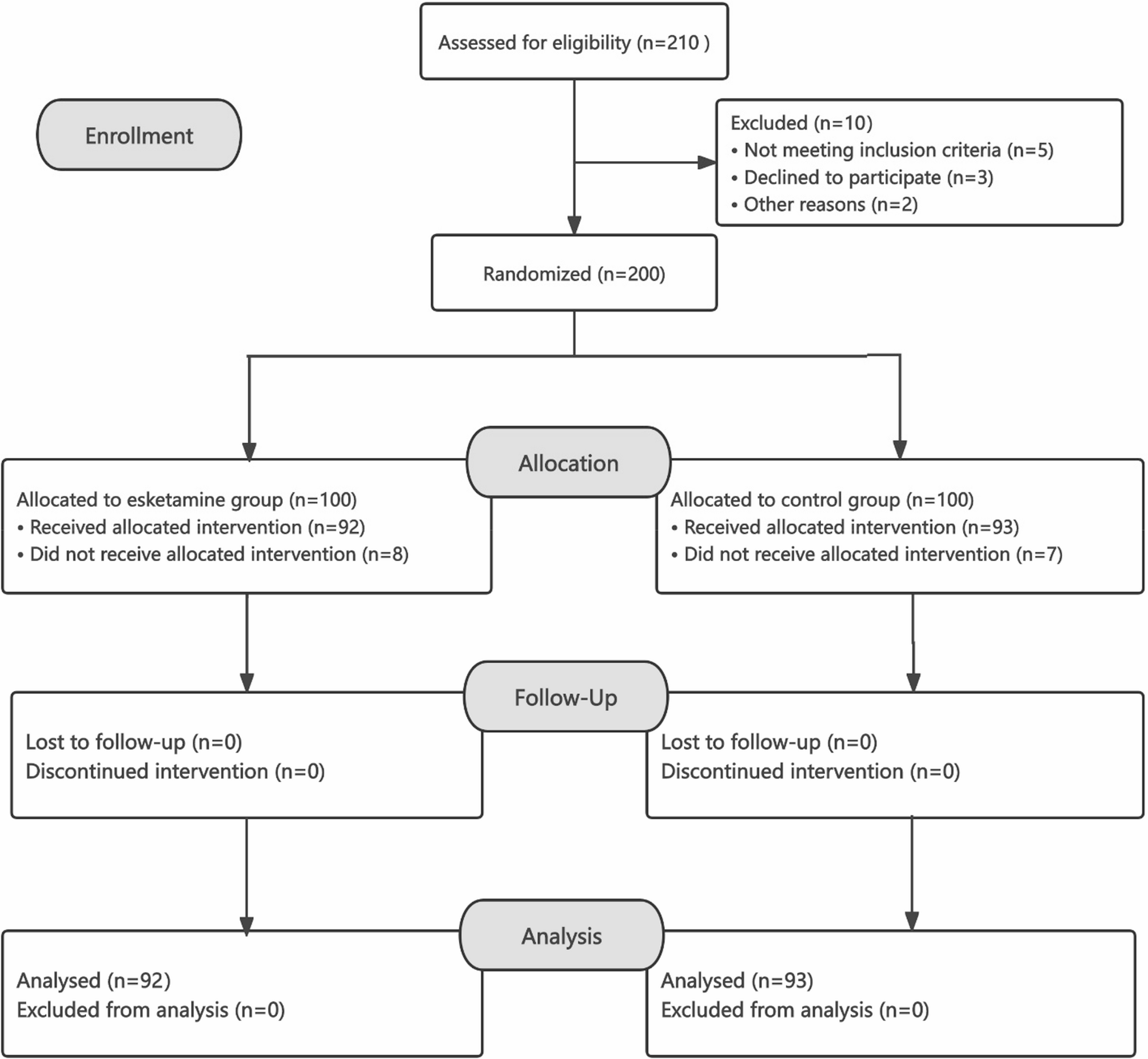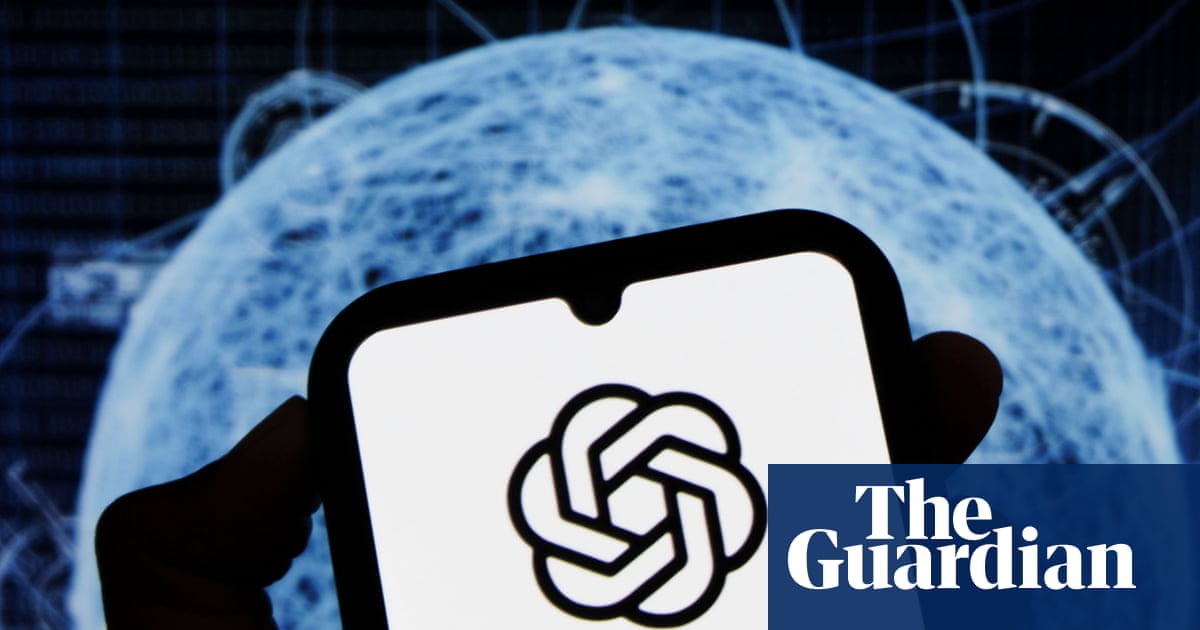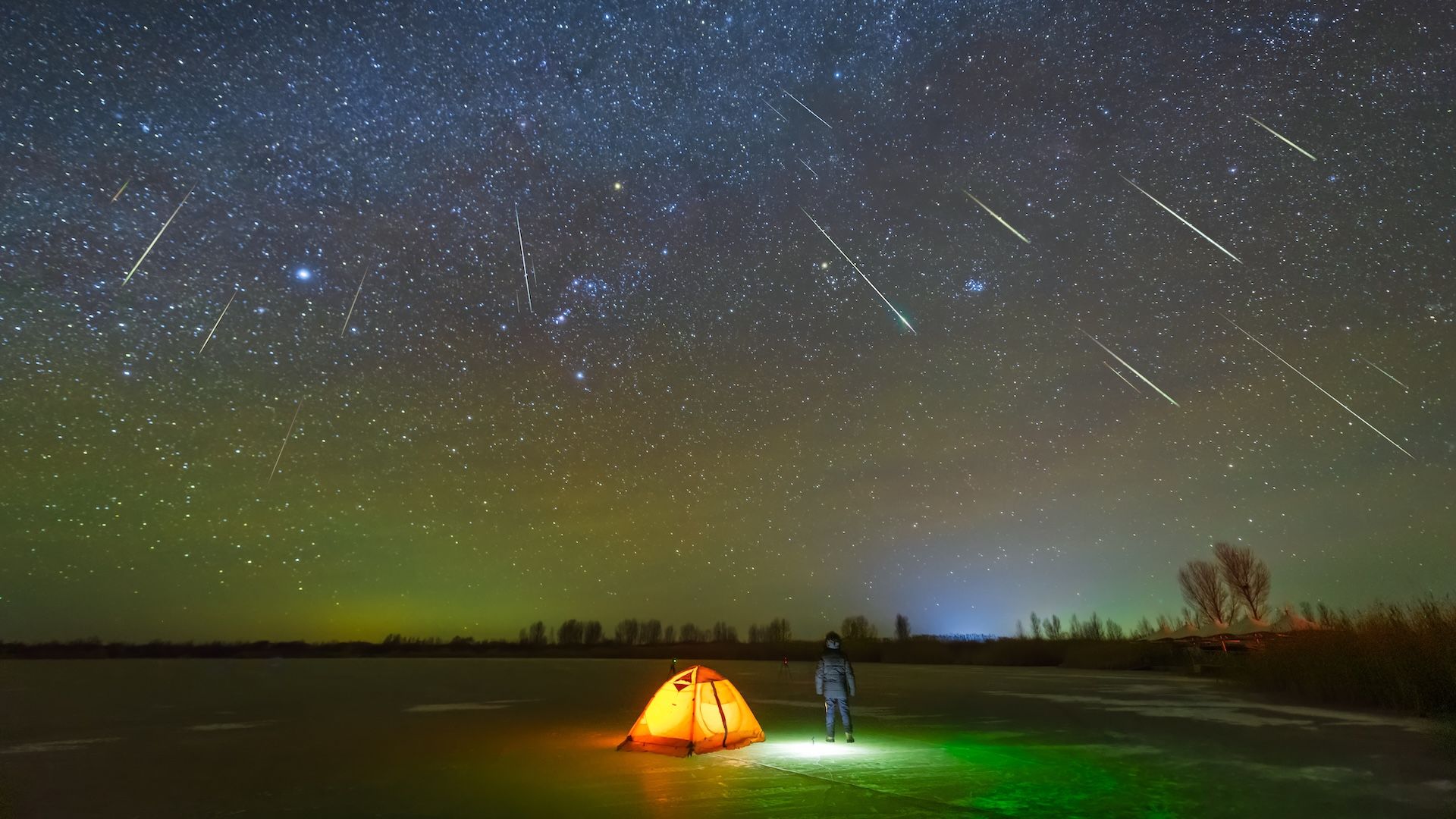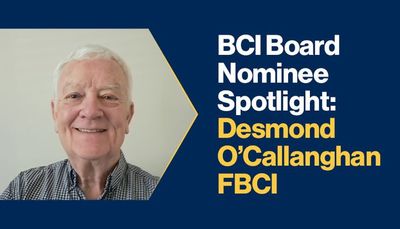When the presenter Jesse Burgess goes to a restaurant, the kitchen always sends him dishes he didn’t order. One of the ironies of fame is that the more you can afford, the less you have to pay for it. Except that Burgess isn’t a celebrity, he…
Blog
-

Esketamine attenuates hemodynamic oscillations during anesthesia induction in elderly gastrointestinal surgical patients: a randomized trial | BMC Anesthesiology
In this randomized, double-blind trial, we demonstrated that adjunctive low-dose esketamine (0.2 mg/kg) with standard propofol-opioid induction significantly reduced the incidence of hemodynamic instability during anesthesia induction in elderly…
Continue Reading
-

‘Legacies condensed to AI slop’: OpenAI Sora videos of the dead raise alarm with legal experts | OpenAI
Last night I was flicking through a dating app. One guy stood out: “Henry VIII, 34, King of England, nonmonogamy”. Next thing I know, I am at a candlelit bar sharing a martini with the biggest serial dater of the 16th century.
But the night is not over. Next, I am DJing back-to-back with Diana, Princess of Wales. “The crowd’s ready for the drop,” she shouts in my ear, holding a headphone to her tiara. Finally, Karl Marx is explaining why he can’t resist 60% off, as we wait in the cold to get first dibs on Black Friday sales.
On Sora 2, if you can think it, you can probably see it – even when you know you shouldn’t. Launched this October in the US and Canada via invitation only, OpenAI’s video app hit 1m downloads in just five days, surpassing ChatGPT’s debut.
AI-generated deepfake video uses the likenesses of Henry VIII and Kobe Bryant Sora is not the only text-to-video generative AI tool out there, but it has become popular for two main reasons. First, it is the easiest way yet for users to star in their own deepfakes. Type a prompt and a 10-second video appears within minutes. It can then be shared on Sora’s own TikTok-style feed or exported elsewhere. Unlike the mass-produced, low-quality “AI slop” clogging the internet, these clips have unnervingly high production value.
The second reason is that Sora allows the likenesses of celebrities, sportspeople and politicians – with one crucial caveat: they have to be dead. Living people must give consent to feature, but there is an exception for “historical figures”, which Sora seems to define as anyone famous and no longer alive.
That seems to be what most users have been doing since launch. The main feed is a surreal whirlpool of brain rot and historical leaders. Adolf Hitler runs his fingers through a glossy mane in a shampoo ad. Queen Elizabeth II catapults herself from a pub table while hurling profanities. Abraham Lincoln erupts with joy on a TV set upon hearing: “You are not the father.” Rev Martin Luther King Jr tells a gas station clerk about his dream that one day all slushy drinks will be free – then grabs the icy beverage and bolts before finishing his sentence.
But relatives of those depicted are not laughing.
“It is deeply disrespectful and hurtful to see my father’s image used in such a cavalier and insensitive manner when he dedicated his life to truth,” Malcolm X’s daughter Ilyasah Shabazz told the Washington Post. She was two when her father was assassinated. Today, Sora clips depict the civil rights activist wrestling with MLK, talking about defecating on himself and making crude jokes.
Zelda Williams, actor Robin Williams’s daughter, pleaded with people to “please stop” sending her AI videos of her father, in an Instagram story post. “It’s dumb, it’s a waste of time and energy, and believe me, it’s NOT what he’d want,” she said. Shortly before his death in 2014, the late actor took legal action to block anyone from using his likeness in advertisements or digitally inserting him into films until 2039. “To watch the legacies of real people be condensed down to … horrible, TikTok slop puppeteering them is maddening,” his daughter added.
Videos using the likeness of the late comedian George Carlin are “overwhelming, and depressing”, his daughter, Kelly Carlin, said in a BlueSky post.
People who have died more recently have also been spotted. The app is littered with videos of Stephen Hawking receiving a “#powerslap” that knocks his wheelchair over. Kobe Bryant dunks on an old woman while shouting about objects up his rectum. Amy Winehouse can be found stumbling around the streets of Manhattan or crying into the camera as mascara runs down her face.
Deaths from the past two years – Ozzy Osbourne, Matthew Perry, Liam Payne – are absent, indicating a cutoff that falls somewhere between.
Whenever they died, this “puppeteering” of the dead risks redrawing the lines of history, says Henry Ajder, a generative AI expert. “People fear that a world saturated with this kind of content is going to lead to a distortion of these people and how they’re remembered,” he says.
Sora’s algorithm rewards shock value. One video high on my feed shows King making monkey sounds during his I Have a Dream speech. Others depict Bryant re-enacting the helicopter crash that killed him and his daughter.
While actors or cartoons may also portray people posthumously, there are stronger legal guardrails. A movie studio is liable for its content; OpenAI is not necessarily liable for what appears on Sora. Depicting someone for commercial use also requires an estate’s consent in some states.
“We couldn’t just intimately resurrect Christopher Lee to star in a new horror film, so why can OpenAI resurrect him to star in thousands of shorts?” asks James Grimmelmann, an internet law expert at Cornell Law School and Cornell Tech.
OpenAI’s decision to hand the personas of the departed to the commons raises uncomfortable questions about how the dead should live on in the generative AI era.
The legal question
Consigning the ghosts of celebrities to for ever haunt Sora might feel wrong, but is it legal? That depends who you ask.
A major question remains unresolved in internet law: are AI companies covered bysection 230, and therefore not liable for the third-party content on their platforms? If OpenAI is protected under section 230, it cannot be sued for what users make on Sora.
“But unless there’s federal legislation on the issue, it’s going to be legal uncertainty until the supreme court takes up a case – and that’s another two to four years,” says Ashkhen Kazaryan, an expert in first amendment and technology policy.
Sam Altman, OpenAI’s CEO, speaks during Snowflake Summit 2025 in San Francisco, California, on 2 June. He is one of the living figures who has allowed Sora to use his likeness. Photograph: Justin Sullivan/Getty Images In the meantime, OpenAI must avoid lawsuits. That means requiring the living to give consent. US libel law protects living people from any “communication embodied in physical form that is injurious to a person’s reputation”. On top of this, most states have right of publicity laws that prevent someone’s voice, persona or likeness being used without consent for “commercial” or “misleading” purposes.
Permitting the dead “is their way of dipping their toe in the water”, says Kazaryan.
The deceased are not protected from libel, but three states – New York, California and Tennessee – grant a postmortem right of publicity (the commercial right to your likeness). Navigating these laws in the context of AI remains a “grey area” without legal precedent, says Grimmelmann.
To sue successfully, estates would have to show OpenAI is liable – for example, by arguing it encourages users to depict the dead.
Grimmelmann notes that Sora’s homepage is full of such videos, in effect promoting this content. And if Sora was trained on large volumes of footage of historical figures, plaintiffs might argue that the app is designed to reproduce it.
OpenAI could, however, defend itself by claiming Sora is purely for entertainment. Each video carries a watermark, preventing it from misleading people or being classed as commercial.
Bo Bergstedt, a generative AI researcher, says most users are exploring, not monetising.
“People are treating it like entertainment, seeing what crazy stuff they can come up with or how many likes they can gather,” he says. Upsetting as this may be for families, it could still comply with publicity laws.
But if a Sora user builds an audience by generating popular clips of historical figures and starts monetising that following, they could find themselves in legal trouble. Alexios Mantzarlis, director of the security, trust and safety Initiative at Cornell Tech, notes that “economic AI slop” includes earning money indirectly through monetised platforms. Sora’s emerging “AI influencers” could therefore face lawsuits from estates if they profit from the dead.
A ‘Whac-A-Mole’ approach
In response to the backlash, OpenAI announced last week that it would begin allowing representatives of “recently deceased” public figures to request that their likeness be blocked from Sora videos.
“While there are strong free speech interests in depicting historical figures, we believe that public figures and their families should ultimately have control over how their likeness is used,” an OpenAI spokesperson said.
The company has not yet defined “recently”, or explained how requests will be handled. OpenAI did not immediately respond to the Guardian’s request for comment.
It has also backtracked on its copyright-free-for-all approach, after subversive content such as “Nazi Spongebob” spread across the platform and the Motion Picture Association accused OpenAI of infringement. A week after launch, it switched to an opt-in model for rights holders.
Grimmelmann expects a similar pivot over depictions of the dead. “Insisting people must opt out if they don’t like this may not be tenable,” he says. “It’s ghoulish, and if I have that instinct, others will too – including judges.”
Bergstedt calls this a “Whac-A-Mole” approach to guardrails that will probably continue until federal courts define AI liability.
In Ajder’s view, the Sora dispute foreshadows a larger question each of us will eventually face: who gets to control our likeness in the synthetic age?
“It’s a worrying situation if people simply accept that they’re going to be used and abused in hyperrealistic AI-generated content.”
Continue Reading
-

Britain’s colonial botany, tiny landscapes and great bohemian outlaws – the week in art | Art and design
Exhibition of the week
The Singh Twins and Flora Indica
A look at the colonial history behind British botany, plus a survey of Indian botanical art in the age of the East India Company.
Kew Gardens, London, until 12 AprilAlso showing
Miniature…
Continue Reading
-

Advising Patients on Vaccines During Pregnancy
As respiratory virus season gets under way, family practice and OB-GYN clinicians are likely having more conversations about vaccinations with patients who are pregnant or expecting to become pregnant soon. And while vaccines have found their way…
Continue Reading
-

Punjab to spend Rs 30bn to upgrade industrial estates
– Advertisement –
– Advertisement –
– Advertisement –
ISLAMABAD, Oct 17 (APP): The Punjab government has prepared a comprehensive plan to accelerate industrial growth across the province, with Rs30 billion earmarked in the current fiscal year…
Continue Reading
-

Rocket Report: China launches with no advance warning; Europe’s drone ship
Welcome to Edition 8.15 of the Rocket Report! This year has been, at best, one of mixed results for SpaceX’s Starship program. There have been important steps forward, including the…
Continue Reading
-

Orionids 2025: Meteor shower caused by Halley’s Comet peaks as two new comets cross the sky
Skywatchers are set for something special after dark on Monday, Oct. 20, through Tuesday, Oct. 21,, when an annual meteor shower produced by Halley’s Comet peaks just as two recently discovered comets reach their brightest points in the night…
Continue Reading
-

Spotify and FC Barcelona Extend Partnership Through 2030 — Spotify
Spotify and FC Barcelona are extending our partnership through 2030, continuing a collaboration that’s redefining how fans, players, and artists connect. The agreement spans the…
Continue Reading
-

BCI Board Nominee Spotlight: Desmond O’Callanghan FBCI
Full name: Desmond O’Callanghan
Membership grade: FBCI
Country of residence: Canada
Professional role: Retired. Past Corporate Program Leader / Consultant / EducatorAbout the nominee
I am a retired BCM expert professional. I have held positions in organizations of all sizes, from 500 to 40,000. Prior to entering the BCM profession at a Canadian bank in 1989, I held positions in Accounting, Administration, Internal Audit and Operations.
My BCM career has spanned 36 years in leadership roles. Much of my employment was in finance, but I also had 13 years of salaried and independent consulting across all sectors. My last full-time job was Director of Global Continuity Services for a major insurance company. Since 2011, I have contributed to the BCI on the Global Membership Council, 11 years on the Canadian Chapter Board, 4 as Leader; a member of the Americas Next Practice Group for 4 years, 2 as Leader.
Now in the Op Res SIG. I have judged awards for 11 years, this year, honorary. I have been a Lead Assessor for the past 6 years. I have contributed to the last 3 GPG updates. I advised Central Office staff in developing the Competency Framework. I have contributed to many education initiatives, including course and exam creation, development and review. I wish to bring all my experience and dedication to the board.
Any prior board governance experience?
I have been involved in BCI governance for over 11 years. As a member of the Canadian Chapter Board, I was the Canadian representative on the Global Management Council until it was phased out.
Subsequently, I was Chapter Vice-President, managing dissolution of the legal entity in 2020; then Group Leader for 4 years in the new structure. I was the Leader of the Americas Next Practice Group and remain active with its successor, the Operational Resilience SIG. Outside the BCI, I have been an active member of the Resilience Information Exchange (RIE) for 36 years, serving on the board and several sub-committees of its Toronto Chapter Board for many years, principally Communications and Program Planning.
I have been a career-long leader/contributor to numerous planning committees for BCM conferences, including BCI World. Besides working life, I have served pro bono on a church finance committee, the board of a not-for-profit seniors’ residence, responsible for operations and strategic planning.
Why serve on the BCI Board?
I would like to serve as a BCI Board Director because the combination of my knowledge and extensive experience within the BCM profession is suited to the role. My passion for business continuity and my extensive involvement in BCI operations and governance would provide a mature and meaningful contribution to its evolution.
Being now retired from remunerative employment will allow me the time and energy to devote to the role. I love being an Ambassador for the BCI and an advocate for the profession and all BCI volunteers.
I see board membership as a valuable, culminating contribution at this stage of my career. I believe strongly in the core principles and practices that were and still are the foundation the BCI is built on. I am committed to knowledge transfer between generations as we go through a demographic shift, embracing new thinking and methodology.
I want to do everything I can to “pay it forward.” I have benefited greatly from the profession and the BCI, and I am keen to contribute what I can in return and promote volunteering as its lifeblood.
What skills and experience do you bring to the board?
In my 36-year BCM career working for companies from 500 to 40,000 employees, my foremost skills have been strategic analysis, communications and leadership.
Most roles I have held have required interpersonal skills in matrix management structures, promoting collaborative behaviours and negotiation. I have experience in co-managing initiatives involving multiple organizations, in both the public and private sectors.
Previous work experience included Finance, Administration, Operations and Risk Management. Having held leadership roles in my BCI volunteer work (Canadian Chapter, Americas Next Practice Group), I have demonstrated a philosophy of success through teamwork.
More on
Continue Reading
